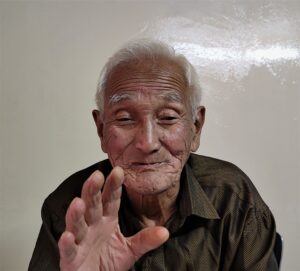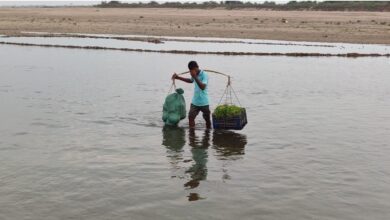Behind the façade
Mawlai, often considered an unsafe area by a section of Shillongites, has its own glory & story

When a first-time visitor to the hill city wants to explore the place, the standard word of caution would be, “Stay away from Mawlai.”
Mawlai, which literally means three stones or monoliths, is often described by a section of the citizens in Shillong as a “notorious” area and should not be explored after sunset, especially if one is an ‘outsider’. Five years on, it still remains unfathomable why the caution on Mawlai had come.
The area, which is the largest in the city with 16 localities, is dominated by the Khasi population, has become infamous for various reasons not only among the non-tribal population but also a section of the locals. The first and the foremost reason for this being the area’s links with militancy. Many prominent rebel leaders during the nineties were from different localities of Mawlai. During the peak period of militancy in the Khasi Hills, numerous incidents of violence were reported from the area. Sporadic incidents of assault of ‘outsiders’ were also reported in the recent years.
“There were troubles in 1987 against Nepalese, it was more horrible. I was busy those days to bring peace and then in 1992 too,” said SD Khongwir, who has held the post of headman of Mawlai Nonglum for the past 53 years.
In 2018, the flare-up over a Punjabi-Khasi altercation spread from Motphran to Mawlai. Stone-pelting and attacks by protesters made the stretch from Iewduh to Mawlai through Jaiaw inaccessible.
The adjacent neighbourhood, Jaiaw, is also considered “unsafe” by many. The charred remains of a vehicle in the area that faced the wrath of protesters on August 15 may evoke a sense of insecurity in a first-time visitor but the quietude of the interior localities here gives a different impression.
The recent killing of surrendered HNLC top leader Cherishstarfield Thangkhiew by police on August 13 at his residence in Mawlai Kynton Massar and the subsequent protests have once again put the spotlight on the area. All the 16 localities of the area have boycotted the police force and deployed local security guards who are well-trained in managing road traffic. The headmen have refused to be part of the state government’s judicial inquiry into the incident and demanded punishment of the police personnel responsible for Thangkhiew’s killing. The defiance, said a resident, “should not be a reason to judge Mawlai as a bad place”.
According to a few residents whom Sunday Monitor spoke to during walk around the localities after the incident, the defiance is because human rights have been violated and residents are angry at the way the state police showed its high-handedness.
“Mawlai is actually a safe area and people here are peace-loving. It earned a bad name in the late seventies (during the communal clash) but there is no problem now,” said Teiborlang Pathaw, the MDC from Mawlai.
“However, Mawlai is tribal-dominated and every tribal has a strong feeling for Hynniewtrep (the Khasiland) and believes that if not on guard, the small community will be overpowered by other communities,” Pathaw explained when asked about the locality’s links with militancy.
The 44-year-old MDC was born and brought up in the area and has been witness to the good and bad days. According to him, residents of Mawlai do not resort to violence unless provoked, like the August 13 incident.
“We are trying to bring normalcy. We do not need a peace committee and we told this to the chief minister and the deputy chief minister during a meeting on August 20. This is because peace is already there. Prior to the meeting with the chief minister, headmen of 13 of the 16 localities attended the meeting at my residence.

Regarding the weapons taken away from the police, it remains a mystery but we had already appealed to people to hand them over,” said 88-year-old Khongwir, who is also the president of Mawlai Town Dorbar.
It was indeed peaceful. Though many shops were open in all the localities, there was barely any crowding. The traffic was well-managed and there was no sign of violence. In fact, the Sunday Monitor team was greeted with a smile by several residents who were ready to share their thoughts.
“People often talk about Mawlai producing several militant leaders. But this is the same place that produced two chief ministers (BB Lyngdoh and JD Rymbai) and two chief secretaries (JM Jala and WMS Pariat),” said Pathaw.
Noted personalities like IM Simon, who was associated with NEFA and worked with Verrier Elwin and his son, was also from Mawlai. The first deputy chief minister, SD Khongwir, is also from the area.
Bestar Rose Kharmujai, the 87-year-old headman of Mawlai Mawdatbaki, laughed when asked about how secure Mawlai is for ‘outsiders’. The lines on his face become more intricate when he laughs baring his toothless gums.
“I have seen so many operations in my life. I have seen police hunting for HNLC men in Mawlai. I have seen it all,”

he said and paused for a few seconds before starting to reminisce. “Mawlai is safe. We want the CRPF camp to be shifted. The CRPF men are ill-behaved and I do not blame them as they live without their families here. The residents of Mawlai have been objecting to the camp since the seventies.”
When asked about the economic backwardness of the area, Kharmujai agreed that poverty is acute in the interiors of Mawlai and only a few households in the main area show signs of prosperity.
The economic backwardness of a major part of the area and lack of education often impact the socio-cultural coexistence. Abject poverty has often led disillusioned youths into the darkness of crime and militancy. It has also given rise to insecurity among locals against ‘outsiders’.
A youth, whom the Sunday Monitor team met near a shop in an almost deserted lane, said like other parts of the state, Mawlai too has rampant joblessness and that was pushing many youngsters into drug addiction and petty crime. “But the local administrative bodies and Seng Samla have dealt with the problem. I do not think anyone should be scared to come to Mawlai at any time of the day,” he added.

Currently, Mawlai looks peaceful. Shops in some localities remain open beyond 5 pm, the notified time by the authorities, but one would barely see buyers violating health protocols. The madness is absent but a method is definitely in place.
The residents here are now waiting for the government’s response to their demands and “the situation has improved and it will be fully normal if the state fulfills the demands”, said Congress MLA from Mawlai PT Sawkmie.
All residents of Mawlai want is a responsible government and a reliable law and order system so that locals do not have to take to the streets against injustice. “We want peace to return and we do not want people to suffer on our account,” said Grainey FG Diengdoh, Thangkhiew’s son who was present in the house on the day of the incident.
“The government should understand the sentiments of the people of Mawlai. I appeal to all the people to remain calm to allow peace to prevail,” he added.
While the government must do its duty, citizens who believe Mawlai is “unsafe” must also make an effort to look at the other side of the story.
~ Team Sunday Monitor




